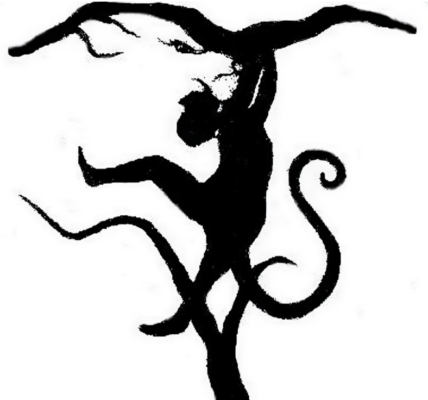The beloved sitcom Leave It to Beaver captured the essence of American family life in the 1950s and early ’60s, delivering timeless lessons through the charming misadventures of the Cleaver family. Although the show painted a near-perfect picture, it wasn’t without its share of quirks, bloopers, and funny slip-ups that even the most loyal fans may have missed. Let’s explore some of the amusing behind-the-scenes moments and little-known facts that add even more charm to this classic TV series.
Setting a New Standard for Wholesome Entertainment

Leave It to Beaver wasn’t just another family sitcom. It set the benchmark for wholesome entertainment that focused on the everyday challenges of the Cleaver family, with a strong emphasis on moral values and lighthearted humor. Unlike today’s shows, which often lean into complex narratives or edgy humor, Leave It to Beaver presented an idealized family that viewers could look up to. Running from 1957 to 1963, the show transported audiences to the fictional town of Mayfield—a place where life seemed simpler and kinder.
But even this “perfect” series had its share of on-screen slip-ups and hilarious errors that added a human touch to its otherwise polished image. Let’s take a look at some of these fun moments.
June Cleaver’s Calendar—An Unexpected Blooper
Barbara Billingsley’s character, June Cleaver, was the epitome of a perfect mother—graceful, composed, and always well-organized. However, eagle-eyed fans have spotted a minor detail that slipped through the cracks. The Cleaver family’s wall calendar was often out of date! For instance, in the 1963 episode titled The Poor Loser, the calendar displayed the wrong year, suggesting that the prop might have been a reused one from earlier episodes.
This small oversight became a fun Easter egg for fans, reminding everyone that even the Cleavers’ meticulous household had its flaws. And for viewers, spotting these rare imperfections added a dose of humor to an otherwise perfectly staged family life.
The Misspelled Baseball Tickets—Mayfied or Mayfield?
In the same episode with the calendar mishap, another subtle mistake slipped past the production team. Ward and Beaver eagerly prepare to attend a baseball game, and a close-up shot of their tickets reveals a small but obvious spelling error. While the town’s name, “Mayfield,” is correctly printed in large text, the smaller print spells it as “Mayfied.”
This might seem like a small detail, but it’s one of those quirky mistakes that fans enjoy spotting, making them appreciate the show’s human element even more. Such bloopers make the series feel more real, as if the Cleavers themselves could be part of our imperfect world.
The Fake Bee in The Silent Treatment

Television special effects were far from sophisticated in the 1950s, forcing the Leave It to Beaver crew to get creative in funny ways. In the episode The Silent Treatment, Beaver has a humorous encounter with a buzzing bee while painting a door. Rather than using a real bee, the crew opted for a plastic bee suspended on a string.
Upon closer inspection, you can actually spot the string bobbing near Beaver’s face! Although it’s far from convincing by today’s standards, this low-budget prop added a whimsical touch to the scene, showcasing the production team’s resourcefulness.
Jerry Mathers’ Audition—The Reluctant Cub Scout
The story of how Jerry Mathers landed the role of Theodore “Beaver” Cleaver is almost as charming as the character himself. On the day of his audition, Mathers arrived in his Cub Scout uniform, with plans to attend a scouting event afterward. His main concern wasn’t impressing the producers but rather finishing the audition in time to make it to his Cub Scout meeting.
The show’s creators, Joe Connolly and Bob Mosher, were captivated by Mathers’ honest, unfiltered personality and saw him as the perfect fit for Beaver’s innocence and relatability. Ironically, once he got the role, Mathers had little time for scouting due to his busy filming schedule, but his audition story has become legendary in Leave It to Beaver history.
Tony Dow Wasn’t Originally Cast as Wally Cleaver
Tony Dow became synonymous with Wally Cleaver, the reliable big brother to Beaver. But surprisingly, he wasn’t the first actor cast for the role. In the pilot episode, the character was played by Paul Sullivan, who had to be replaced when he grew too tall and mature-looking for the part.
Dow stepped into the role with ease, bringing a grounded, authentic presence to the Cleaver family dynamic. His portrayal of Wally became one of the show’s highlights, cementing the brotherly bond between Wally and Beaver and creating one of television’s most memorable sibling relationships.
June Cleaver’s Pearls—A Fashion Choice with Purpose
June Cleaver’s polished look—complete with pearls and heels—became an iconic symbol of 1950s motherhood. However, there was a practical reason for these accessories. Barbara Billingsley wore pearls to cover a small surgical scar on her neck, a detail she preferred to keep hidden. Meanwhile, the high heels helped her maintain a balanced height with her growing “sons.”
These wardrobe choices not only added to June’s refined appearance but also helped the actress feel confident and comfortable in her role, ultimately contributing to her memorable portrayal of the quintessential mom.
Jerry Mathers and Tony Dow’s Real-Life Friendship

The chemistry between Jerry Mathers and Tony Dow as Beaver and Wally was more than just on-screen magic. Off-camera, the two developed a genuine friendship that lasted well beyond the show’s run. Mathers once described Dow as “the perfect big brother,” a bond that deepened over the years. When Dow passed away in 2022, Mathers expressed his heartfelt sadness, recalling their lifelong friendship fondly.
Their real-life connection added a layer of authenticity to their performances, making the Cleaver brothers’ relationship one of the most beloved aspects of the show.
Television’s First Bathroom Scene—Breaking New Ground
Leave It to Beaver quietly made television history by featuring the first bathroom scene. In the very first episode, Beaver and Wally plan to keep a pet alligator in the bathroom, leading to a scene that subtly included a shot of the toilet. At the time, even the sight of a toilet on TV was considered inappropriate, and the show’s producers had to negotiate with censors just to show the back of the tank.
This small victory opened the door for more realistic depictions of family life on TV, making Leave It to Beaver a trailblazer in subtly pushing boundaries.
A No-Laughing Policy for Subtle Comedy
Unlike many sitcoms, Leave It to Beaver avoided laugh-out-loud moments and laugh tracks, instead opting for understated humor. The show’s creators believed in a gentle, sincere tone, where comedy emerged naturally from relatable situations rather than forced jokes. This approach gave the show a unique charm, allowing it to resonate with audiences without relying on exaggerated humor.
The subdued style made Leave It to Beaver feel more authentic, creating a comforting environment for viewers and adding to its lasting appeal.
Conclusion: The Enduring Legacy of Leave It to Beaver
Leave It to Beaver holds a cherished place in television history, not only for its idealized portrayal of family life but also for its endearing quirks and honest imperfections. From misspelled tickets and fake bees to real friendships and groundbreaking moments, the show offered more than just scripted entertainment. These behind-the-scenes details remind us that even a “perfect” family has its flaws, adding depth and humor to the series.
Next time you revisit Leave It to Beaver, take a closer look for these delightful quirks. They’re a testament to the show’s charm and enduring legacy, proving that even the smallest bloopers can make a classic family favorite feel even more lovable.




